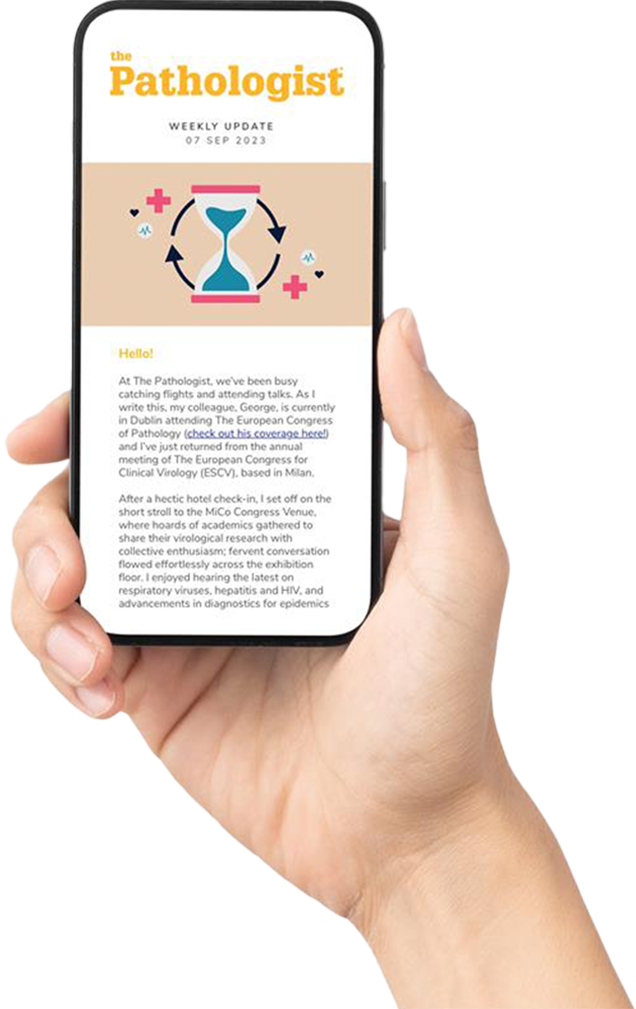Against a landscape of increasingly complex diagnostics at the molecular level, the Association for Molecular Pathology (AMP) has released a series of reports on core bioinformatics capabilities for laboratories. To find more about its vision for an evolving lab workforce, we spoke with Somak Roy, Chair of AMP’s Clinical Bioinformatician Body of Knowledge Steering Committee and Professor and Director of Molecular Pathology, Cincinnati Children’s Hospital Medical Center.

How do you anticipate the pathology workforce changing as molecular diagnostics become more embedded in pathology workflows?
Molecular diagnostics, particularly comprehensive cancer profiling using next-generation sequencing (NGS)-based tests, is increasingly becoming a standard of care for diagnosis and management of several types of cancer in adult and pediatric practices. The integration of NGS and other advanced technologies into clinical molecular diagnostics laboratories requires robust bioinformatics pipelines and computational solutions to manage and interpret complex clinical data and assist with diagnosis and patient management.
There is an urgent need for incorporating clinical bioinformatician professionals as part of the molecular pathology team; these experts can develop, validate, and implement a scalable and secure bioinformatics infrastructure in regulated environments. They are essential to ensure the accurate and effective application of molecular diagnostic technologies in patient care.
What are the current gaps in education that need to be addressed to equip the pathology workforce of the future?
The adoption of advanced technologies such as NGS highlights the urgent need for professionals with bioinformatics expertise in clinical molecular diagnostics teams. Clinical bioinformaticians must not only understand the accreditation and regulatory requirements of a clinical laboratory, but also the broader clinical ecosystem, including molecular laboratory workflow, laboratory information management systems, ordering and reporting platforms, and electronic health records.
Current bioinformatics and software engineering training programs, however, offer limited exposure to the realities of clinical molecular diagnostics laboratories, which differ significantly from the research settings where most bioinformaticians are trained. Moreover, there is no standardized body of knowledge that defines the core competencies expected of clinical bioinformaticians. This lack of clarity can lead to uncertainty about roles and responsibilities, creating challenges in workforce development.
How will the Clinical Bioinformatician Body of Knowledge help address these gaps?
AMP’s Body of Knowledge series defines the potential roles of bioinformaticians in the clinical molecular diagnostics laboratory and offers guidance on competencies and skill sets for both practitioners and leaders. While the primary audience is clinical bioinformaticians, the resource also serves molecular laboratory directors, graduate program directors, and even administrative stakeholders such as human resources leaders.
Importantly, the Body of Knowledge series is not intended to be exhaustive. Instead, it provides a foundation for further learning, reflecting both the published evidence base and expert consensus at the time of publication.
How does AMP define a clinical bioinformatician?
AMP defines a clinical bioinformatician as an individual who primarily utilizes bioinformatics methods, algorithms, and tools within a clinical molecular diagnostics laboratory for the development, validation, and deployment of bioinformatics pipelines and other computational tools to support clinical tests.
This definition emphasizes the distinction between applying bioinformatics in a research setting versus a regulated clinical environment – such as CLIA – where test results directly impact patient care. The role can vary significantly depending on the size of the laboratory, the scope of testing, and other operational factors.
What has been identified as the core knowledge areas, and why?
Molecular Diagnostics Core: Covers foundational concepts in molecular biology, genetic variation, molecular diagnostic methods (with an emphasis on NGS), and principles of good clinical laboratory practice. This knowledge ensures bioinformaticians can design and evaluate algorithms and pipelines in alignment with clinical assay requirements.
Clinical Bioinformatics and Software Development Core: Focuses on the software development life cycle in a clinical context, including best practices for creating, validating, and deploying scalable bioinformatics software. Given that NGS pipelines represent significant software development efforts, even when using open-source tools, training in version control, containerization, and cloud-native technologies is essential.
Clinical Laboratory Regulation and Data Security Core: Highlights the regulatory and IT frameworks necessary for operating in a clinical laboratory. Bioinformaticians must understand compliance requirements, data security, and IT infrastructure needs – such as scalable computing resources, data storage, and network reliability – to ensure patient data is securely managed in accordance with federal, state, and local regulations.
How were the three guidelines developed?
AMP convened three Knowledge Core Working Groups, each composed of subject-matter experts, under the coordination of a steering committee of working group chairs. Jason Merker and I co-chaired the steering committee, ensuring the three resources were developed cohesively on a shared timeline, which was a complex but rewarding task. Given the rapid pace of technological and regulatory change, AMP anticipates the need for ongoing review, updates, and collaborative revisions to keep the Body of Knowledge series current and relevant.
How have lab leaders and medical educators reacted to the publication of the Body of Knowledge?
Feedback from AMP members, the broader clinical laboratory and informatics communities, and leaders of professional organizations in the US and internationally has been overwhelmingly positive. The series was introduced at the AMP 2024 Annual Meeting & Expo, and at AMP Middle East 2025 in Abu Dhabi, where it was very well received. AMP is currently developing webinars and other educational resources based on the series to further clarify and promote understanding of the clinical bioinformatician’s role.




